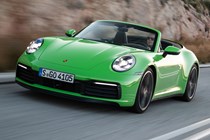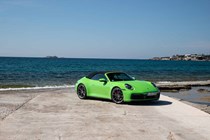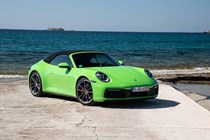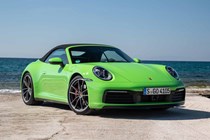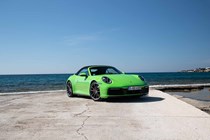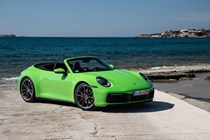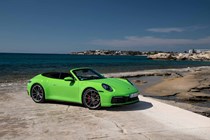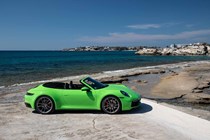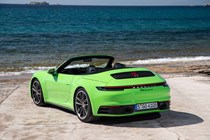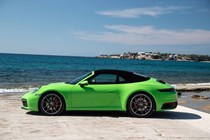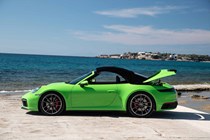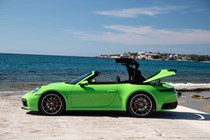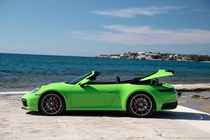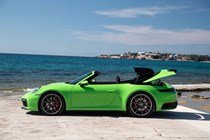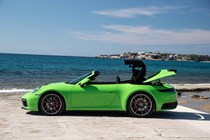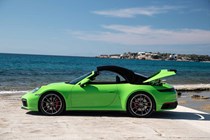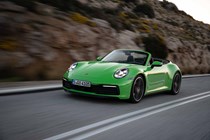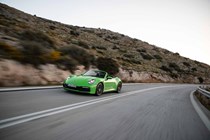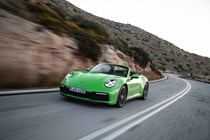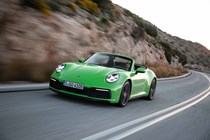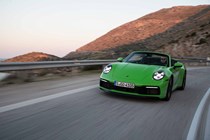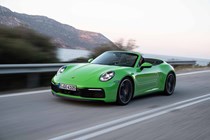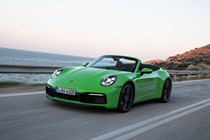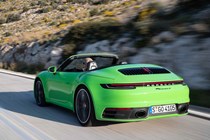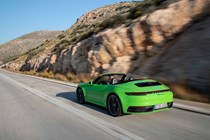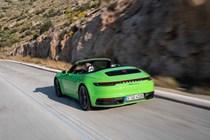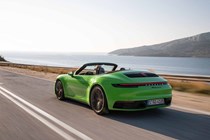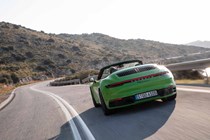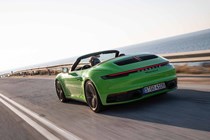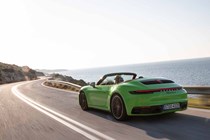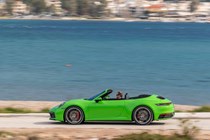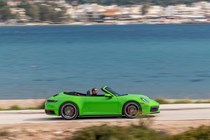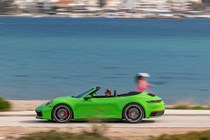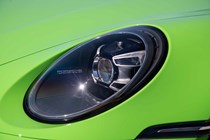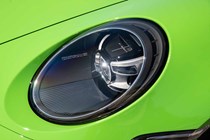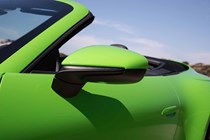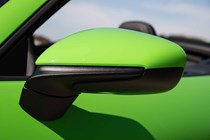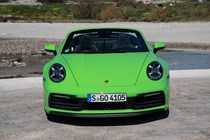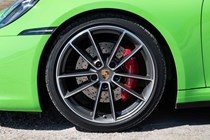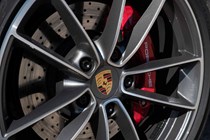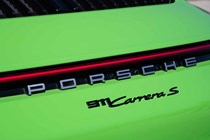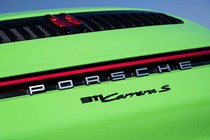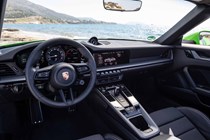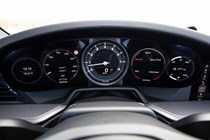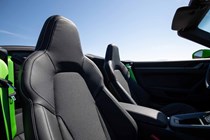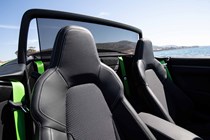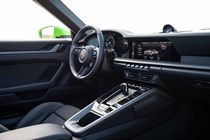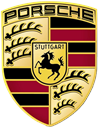
Porsche 911 Cabriolet engines, drive and performance
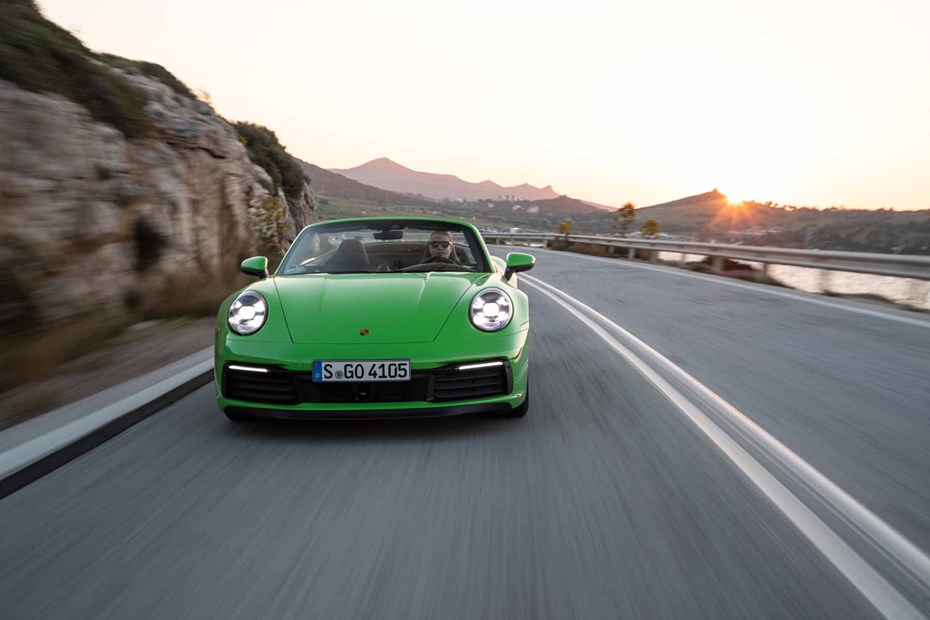
- Turbocharged 3.0-litre your only option
- Two- and all-wheel drive models
- No manual gearbox – PDK auto only
There are only two versions of the Porsche 911 Cabriolet currently available and both use the same six-cylinder, 3.0-litre turbocharged engine. Like-for-like this car is four tenths quicker from 0-62mph than the old – a noticeable step up in performance.
Carrera S Cabriolet
The current entry to the range features performance that is anything but, thanks to larger symmetrical turbos with electrically controlled wastegates, higher engine compression and piezo injectors.
Don’t worry about what all this means – the net result to you is a more responsive engine with 450hp at 6,500rpm and 530Nm available across a broad spread of 2,300 to 5,000rpm. This engine has grunt everywhere and feels very linear in its delivery – it’s hard to believe there will be several more powerful models coming when the Carrera S is as thunderous as it is.
That results in a 0-62mph in 3.9 seconds or 3.7 seconds if you equip the optional Sport Chrono Package. That’s only a few tenths off the Coupe’s effort, which is jolly good when you think about it, and the top speed is 190mph.
Noise enthusiasts lamenting the use of turbocharging across the 911’s range will be even more upset by the addition of a gasoline particulate filter in this model – further muffling that characteristic flat-six howl in exchange for lower emissions.
To combat this Porsche has revamped the exhaust system, plus there’s an optional sports exhaust, with oval tailpipes instead of the standard round. In truth the turbocharged 911 doesn’t sound as exciting as the naturally aspirated car with either system, especially at higher revs where the old model really came alive. The sound is broadly the same (although louder) at the top and bottom of this car’s reach.
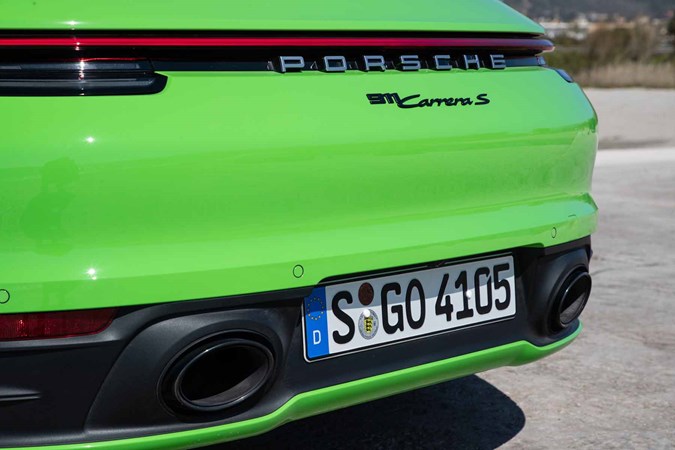
So in this 911 with its 7,500rpm redline there’s less incentive to stretch it fully to get the best noise – but then again, there’s so much torque low down, you don’t really need to wring it out to make fast progress. While you’re down there you’ll notice a lot of turbo noise – whistling and chattering as the compressors spool up and vent – which is quite exciting in its own way.
Carrera 4S Cabriolet
The all-wheel drive variant uses the same engine as the standard Carrera S except it sends its power to both axles, with a new water-cooled final drive at the front – which we’ll explain in the handling section.
That extra grip enables a faster 0-62mph time – in 3.7 seconds or 3.6 with the Sport Chrono Package.
PDK automatic only
Your gearbox choice is also restricted to a newly developed eight-speed auto known as Porsche Doppelkupplung (PDK). There’s no manual which may upset purists, but in reality it’s not such a huge loss.
That’s because the PDK shifts in a blink whether you use the excellent steering wheel-mounted paddles or not and has a spooky ability to put you in the correct gear before you realise you need it. In its normal mode it favours upshifting to save fuel and keep things hushed, but in either of the sportier settings it’s almost telepathic in its selection.
This new ‘box also has a shorter first gear and longer eighth gear compared to the previous seven-speed PDK. That means quieter and more comfortable cruising, as well as improved economy. You can actually reach the top speed in sixth gear, with the final two providing long-legged ability on a run.
This time around the gear shifter has been redesigned – no longer a clunky lever but a small rectangular item that looks a bit like an electric razor.
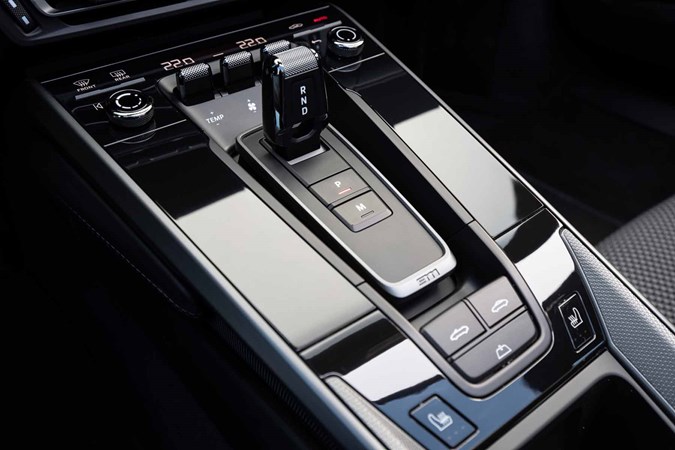
Why does this matter? Well it’s not quite as intuitive to use in some respects – previously you simply knocked the lever across with the back of your hand to put the gearbox in manual mode, and now you have to press a small ‘M’ button, which is situated perilously close to the ‘P’ button that locks the gearbox in park.
In order to not get the two mixed up on the move you need to take your eyes off the road, not ideal in a moment of enthusiastic driving. You also can’t use the lever as a sequential gear shifter anymore for moments when the steering wheel is spinning through your hands. All-in-all it feels a retrograde step.
Despite this, to say we rate Porsche’s auto is an understatement – it’s not quite as involving as driving a three-pedal car but it’s really not far off, and the benefits to daily use outweigh those rare chances you get to enjoy a decent manual gearbox, in this writer’s opinion.
- Revamped chassis with larger wheels
- Bigger brakes and stiffer suspension
- Porsche promises enhanced comfort too
From the off the Porsche 911 promises agile and engaging handling thanks to its rear-engine layout and low centre of gravity from the layout of its engine – a flat-six, rather than a ‘V’ configuration, which keeps a lot of the car’s bulk close to the tarmac.
It’s a bit of a revelation all-in-all – we kept forgetting we were in a convertible, in fact, because there doesn’t seem to be any penalty in terms of chassis sharpness or body control. Front end grip is prodigious and in rear-driven cars the balance of traction front-to-back makes the 911 Cabriolet incredibly satisfying to drive.
What’s new in the Porsche 911 Cabriolet?
This time around the German manufacturer promises advances in both day-to-day comfort and focused sporting ability – two traits that are traditionally mutually exclusive.
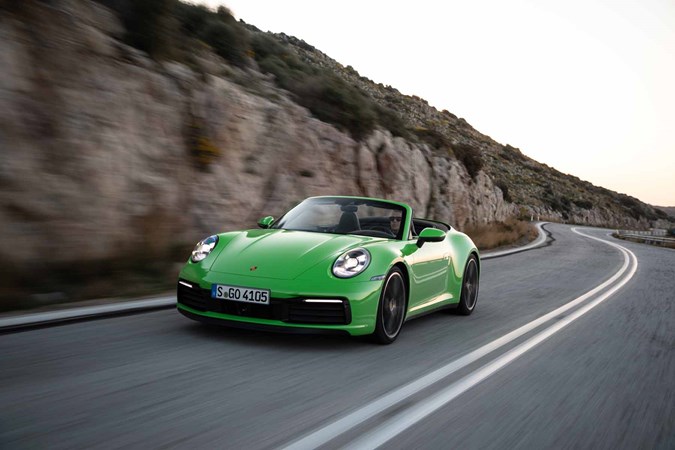
So how is this achieved? Well for a start the 911’s construction features a lot more lightweight aluminium in the body including the entire outer skin and a mixed tyre size with 20-inch wheels up front and wider 21-inchers out back. This means enhanced grip and more control to exploit it.
Faster steering for faster cornering
To that end the steering speed has been ramped up – the rack on the standard car is now 11% more direct (or 6% on cars with option rear-wheel steering), meaning small movements of the wheel result in larger angles of steering at the front.
Porsche’s Active Suspension Management adaptive dampers are now standard and have been revamped with a wider spread of settings, from serenely smooth to fiercely firm, plus you get torque vectoring and a rear limited-slip differential as standard to help improve rear end traction.
Both the suspension and anti-roll bars are stiffer and the rear brake discs are larger for better initial bite and fade resistance. If that’s not enough though you can select the ceramic brake option as an option, but we tried quite hard to overwhelm the standard items and came up wanting.
Drive modes in the Porsche 911 Cabriolet
All cars get Normal and Sport modes, which fettle the engine and drivetrain depending on what type of driving you’re doing, and standard on the 911 now is a new Wet mode – very useful in the UK – which can detect rain on the road via sensors in the wheel arches.
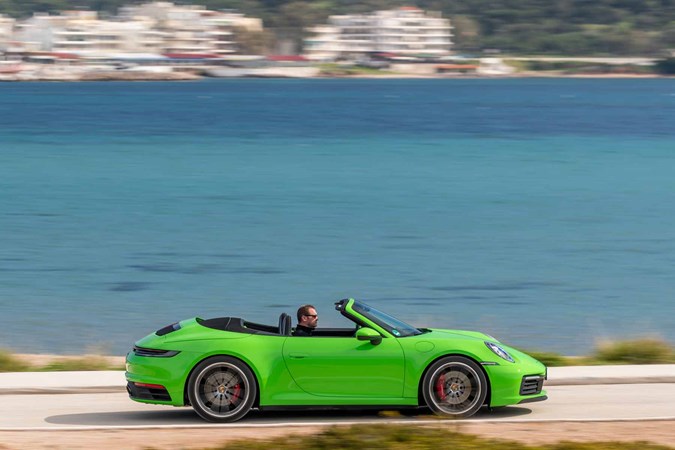
Once activated, the stability and traction control systems, plus drive, aerodynamics and torque vectoring are tweaked to provide safe handling in sodden conditions. For example, at roughly 50mph the rear spoiler tilts for maximum downforce and you can no longer turn off the stability management.
For cars with the Sport Chrono Pack a selection dial is added to the steering wheel to cycle through the drive modes – plus you get the even sharper Sport Plus mode. We’ve spoken more about this in the Behind The Wheel section.
You also get a stopwatch on the dashboard, the Porsche Track Precision app, plus dynamic engine mounts.
Optional handling tech on offer
As an option you can select Power Steering Plus, a variable ratio system that makes low-speed manouevres easier by increasing the amount of assistance, or the Porsche Dynamic Chassis Control with rear-axle steering and active anti-roll bars.
Enhancing the 911’s ease of use factor is a lift system for the front wheels, which raises the nose of the car up by 40mm to make speed bumps and steep entrances to car parks a complete non-problem.
You can also get a sports chassis, which is 10mm lower, for the first time on a 911 Cabriolet. We found this to be quite firm over bumps at low speed, but rewardingly tied-down when driven hard. It’s worth taking an extended test drive to decide whether this is right for you.
911 Carrera 4S with all-wheel drive
For the ultimate in face-bending grip (for now) you’ll want the all-wheel drive Carrera 4S – now featuring a water-cooled front axle.
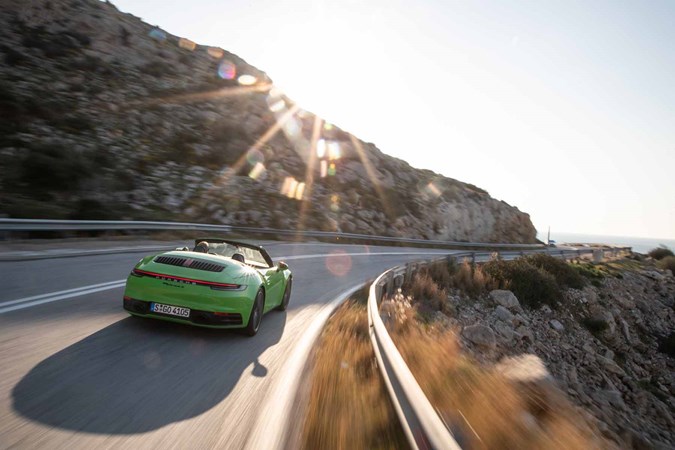
This helps keep things cool in times of extremely low traction, such as driving on snow, but Porsche says it also benefits the car in dry conditions – especially for track use. We reckon this may be more useful in 911 Coupe models, but what you do with your car is your business.
The 4S is 50kg heavier than the two-wheel drive car and we reckon it corrupts the steering a touch – making it feel heavier and a bit less precise. That said, the extra grip it affords makes the 911 Cabriolet handle like its tyres are locked into the tarmac – something that will be deeply appealing to some but not all drivers.


